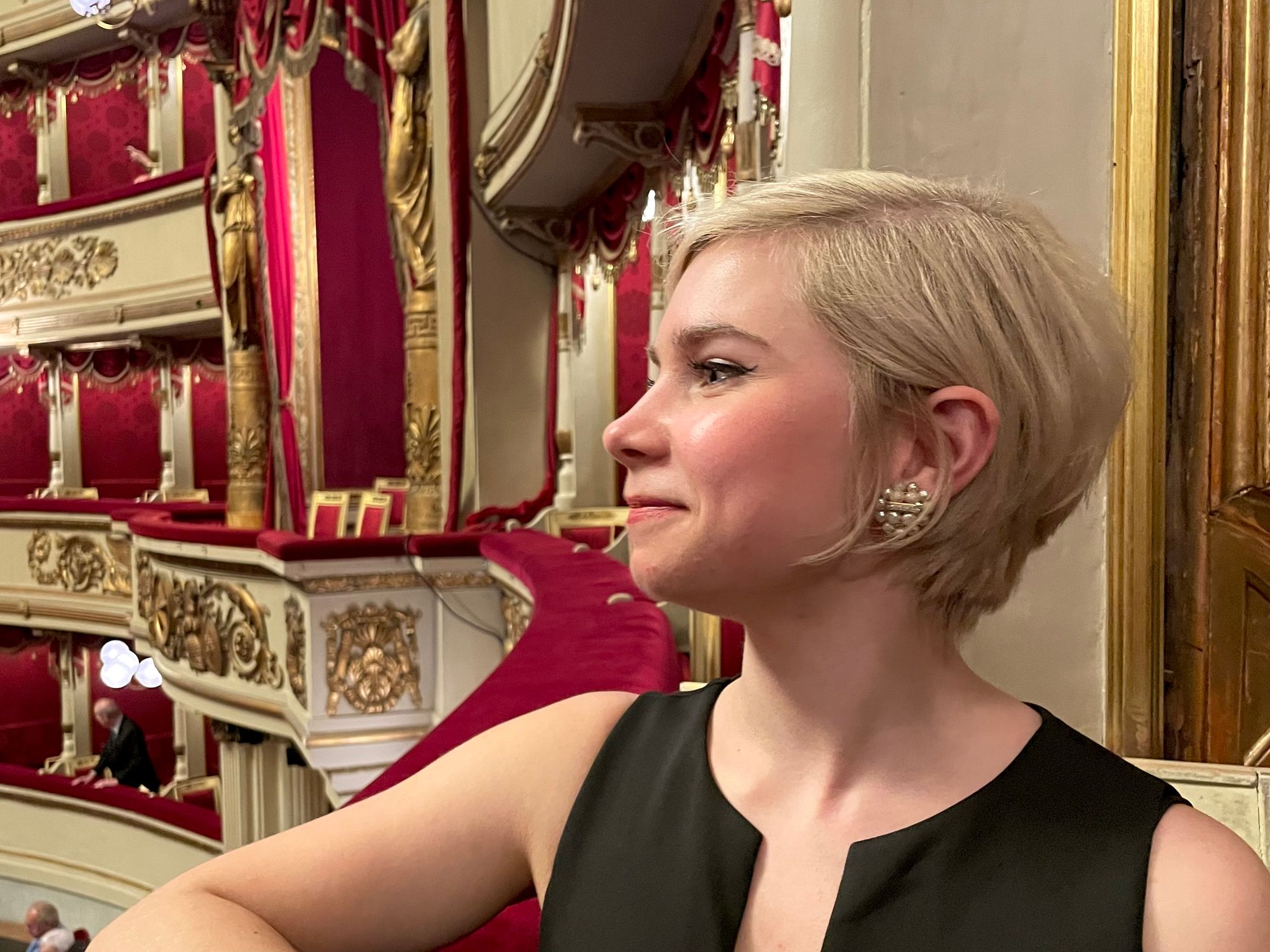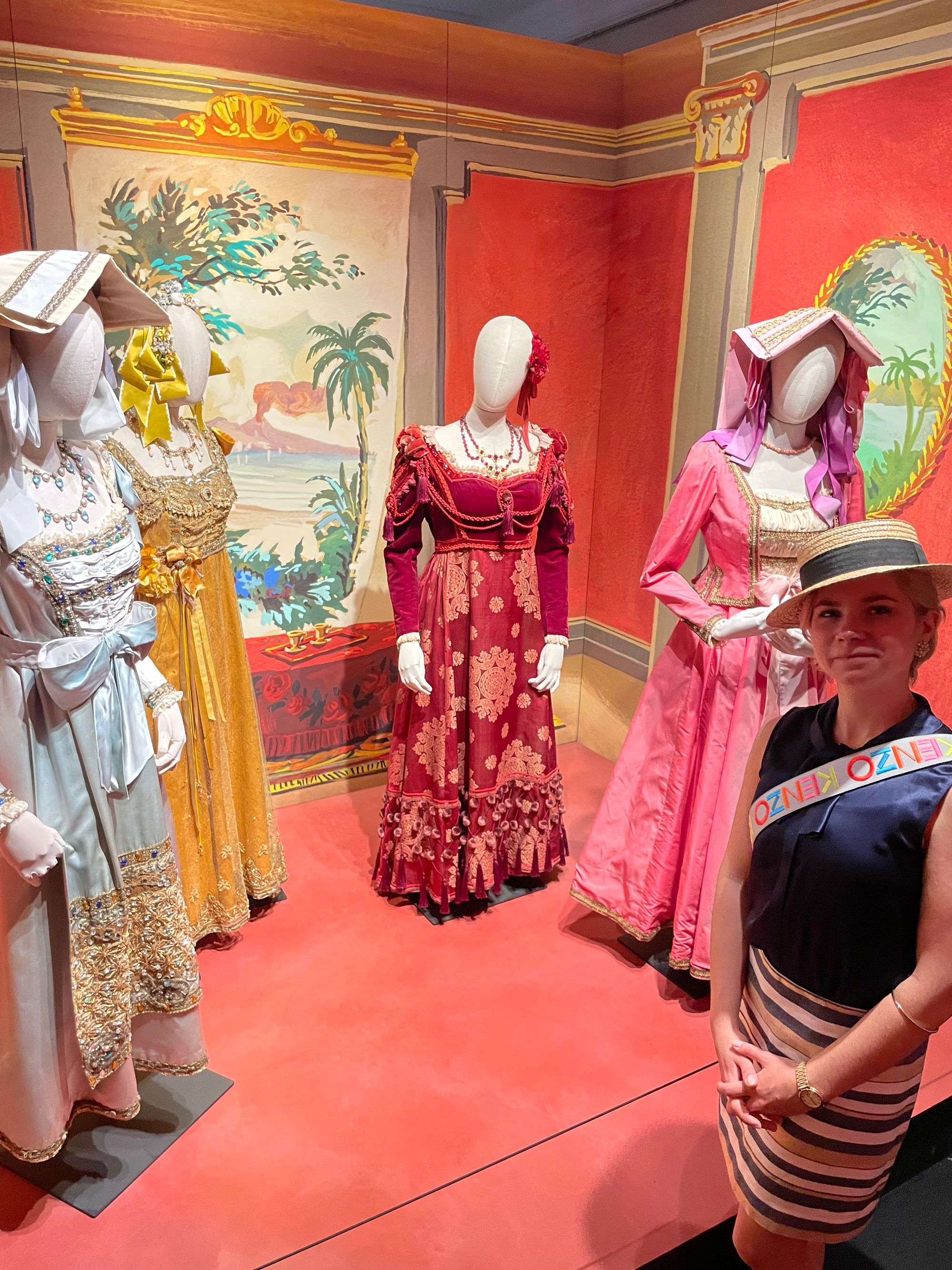A dream night at the opera in Milan✨
It felt almost unreal to step in this mythical opera house and follow the small hallways into our box in the gallery. Until that moment, La Scala had felt so distant when looking from the peripheral perspective of Finland. When I was studying...

Italy, Milan, the 27th of May 2023, at 8 pm.
That night one of my biggest dreams came true: I got to see an opera at the famous Teatro alla Scala opera house in Milan. It felt almost unreal to step in this mythical opera house and follow the small hallways into our box in the gallery. Until that moment, La Scala had felt so distant when looking from the peripheral perspective of Finland. When I was studying the life and the career of Maria Callas last year, La Scala began to interest me even more, until I realized that if I want to go there one day, it's actually quite simple: just buy a ticket and walk in.
All of a sudden going to La Scala didn't feel that distant after all. There are thousands of tourists that visit there every night, so why shouldn't I. Going to La Scala feels slightly intimidating because of its esteemed history and because opera has a very elitist reputation in general as a genre. Even Maria Callas says in her memoir (Maria Callas: Lettres et mémoires, 2019) that was compiled by the documentarist Tom Volf:
"Italy and La Scala represented an impossible dream for me, as if it was situated on Mars or the Moon, and I rejected every thought of it in the depths of my spirit to avoid any disillusions."
(The original quote in French that I translated: "L'Italie et la Scala représentaient pour moi un rêve impossible, comme si cela se trouvait sur Mars ou sur la Lune, et j'en repoussais la moindre pensée au fond de mon esprit pour éviter le désillusions.")
As we know, Callas fulfilled that dream and found herself singing as the prima donna, that is the 'first woman', at La Scala for many years. Now, I found myself sitting in a box at La Scala as well, even though it did feel a bit like an exotic experience.
The building (opened in 1778) is interesting in the sense that it doesn't attract much attention from the outside, and judging by its façade, you'd never guess how big the building actually is. When we did a tour of the museum at La Scala the day after the opera, we learned that the leaning tower of Pisa would fit inside the building. There has to be so much empty space for all of the sets and technology needed for the performances in all dimensions around the stage. If I compare the opera house to Paris' Palais Garnier (opened in 1875) or even the National opera house in Helsinki, La Scala does not draw so much attention to itself as much. I find it so ironic that so much grandiose music theatre and fiery opera history has happened inside those simple walls and a relatively inconspicuous façade.
"Come un bel dì di maggio"
Indeed, how beautiful that day in May was! The weather was perfect and we indulged in the early summer sun before dining in the famous restaurant Savini in the Gallery Vittorio Emmanuele II right next to the opera house. We picked Savini obviously because Maria Callas and lots of other opera stars went there to eat after the shows. After tasting some pasta and Milanese risotto we walked across the square through the doors of La Scala. We found our box, wondered the interior of the box and enjoyed the historical atmosphere of the hall. We also wondered which aristocrats and celebrities of different eras have sat in that box before us.
Even though we came to La Scala mostly to experience its history (and Maria Callas' history there), it was obviously also important to hear and see a great opera there. We saw Umberto Giordano's opera Andrea Chénier (premiere at La Scala in 1896) with the tenor Jonas Kaufmann in the name role, soprano Sonya Yoncheva as Maddalena di Coigny and baritone Amartuvshin Enkhbat as Carlo Gérard.
I believe Callas has sung this opera just once and there exists only that one recording of her singing it. Callas sings at least the aria La mamma morta very beautifully, but she writes in her memoir (Tom Volf, 2019: 61) that she had to practice the role in just five days because the tenor Mario del Monaco wanted to change the opera all of a sudden from Verdi's Il trovatore to Andrea Chénier in 1955 at La Scala.
This opera was actually a perfect choice for us to see on that evening in May, because one of the famous arias in the last act begins with the words "Come un bel dì di Maggio" which means "Like a beautiful day in May". The day isn't that beautiful for the protagonist, the poet Andrea Chénier, because he will be executed soon after singing that aria. The love of his life Maddalena di Coigny decides to die with him after all, so the opera ends with a melodramatic liebestod. We find other famous liebestods in the stories of for example Romeo and Juliet, and of course also West Side Story and Richard Wagner's opera Tristan and Isolde.
Nevertheless, for us that day was especially beautiful, and the opera was very touching with its romantic and dwelling melodies. I kept thinking when the soprano sang, that this must sound something like when Callas sang in the hall – this is how Callas' voice traveled to everybody's ears thanks to the great acoustics. Even though Kaufmann sang very well, the baritone Amartuvshin Enkhbat totally stole the show. He was truly phenomenal and the audience gave him much longer applauses after his arias than for example for Kaufmann. During Kaufmann's applauses we noticed that there were a lot of his very devoted fans in the audience who cheered him no matter what he did on stage.
After the opera when we tried to find a taxi somewhere, we happened to notice that there was a group of fans on the small street beside the opera house, waiting for the stars of the night to come out of the building. Kaufmann and the other singers came out quite soon and the fans were surrounding especially Kaufmann for a while asking for pictures and autographs (I also got an autograph because I just reached my hand in front of him even though he didn't see me😆). When Kaufmann's fans were satisfied, he just walked to his hotel with his wife without any security guards. This proved once again how much of a smaller audience classical music has compared to for example pop music, when such a great operatic star like Kaufmann faces manageable crowds of fans and probably lives a relatively normal life when he isn't performing. I'd like to know how big the crowds were when Callas exited the building after a show to go home or to eat at Savini.😄
Our experience at La Scala was crowned by our visit to the Scala museum the day after the performance. There was an exhibition of the works of the director Franco Zeffirelli, and what's best, there were some of Callas' costumes on display from Rossini's opera Il turco in Italia (1814) that Zeffirelli directed in 1955. It was thrilling to see the costumes, firstly, because in pictures they are in black and white, and secondly, because the mannequins let me imagine how tall Callas looked from a near distance.😜
All in all, my experience at Teatro alla Scala was everything I expected – and more! I hope I get to go there again soon!



